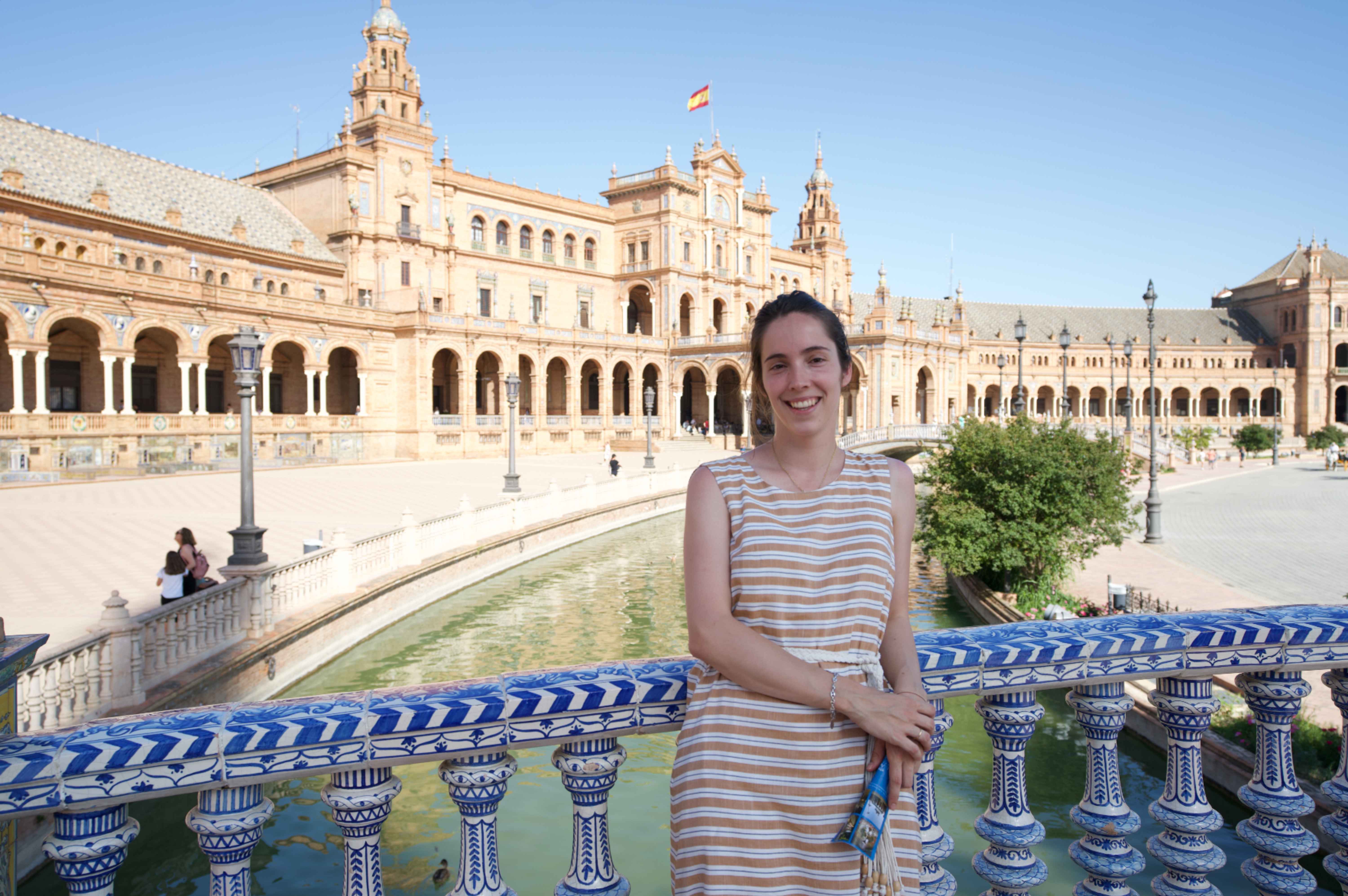Best Time to Visit Spain: Monthly Guide & What to Expect
September 13, 2023
Win a FREE Trip to Spain!
Exciting Announcement! For the first time, we're thrilled to offer exclusive trips to the heart of Spain - an experience like no other. This isn't your typical tourist journey; it's a unique opportunity to immerse yourself in authentic Spanish culture, alongside real locals and our passionate team.
But there's more! Simply by requesting information about this amazing trip, you'll be entered into a special draw to win a Fully Paid Trip to Spain for Two. And that's not all - everyone who inquires will receive an exclusive bonus gift, valued at $500, available only now.
Ready to Discover the Real Spain?Click Here ↑ to Request Information & Enter the Draw!
Depending on your cup of tea, your journey through Spain can lead you to explore hidden coves while scuba diving, discover the Pyrenees’ snowy slopes, hike mountain peaks, see volcanic landscapes, or savor the view of spring flowers to the beat of Flamenco. You might even contemplate the bold tradition of running with the bulls among thousands of others!!
So I’m ready to share all my insights about the best times to visit Spain. Whether you’re seeking favorable weather, smaller crowds, or unique experiences, let me guide you to make the most of your trip planning.
Oh, and Spain’s diversity guarantees it’s a destination for everyone any time of the year!! (You’ll soon discover why.) There’s no such thing as a “once in a lifetime” place, well, maybe a few experiences. But Spain will keep calling you back, and you’ll want to return and see it through new eyes every time.
By now, you might swear I am biased (I may be a little) But, as a proud Spaniard and having lived in other countries like Iñigo, I can confirm that Spain ranks among the world’s top-tier destinations, so let’s get into it!
Rating (5 stars = an excellent month to visit, 1 star = consider another time)
Here’s our guide by season, in case you need more especific information:
- 🌸Spring: 10 Best Spring Destinations in Spain: Weather & Fun Activities
- 🏖️Summer: Summer in Spain: 10 Best Places To Visit & Weather Info
- 🍂Autumn: 5 Best Autumn Destinations in Spain: Weather & Fun Activities
- ❄️Winter: Spain in Winter: Weather, Destinations, Tips & more
Table of Contents ▼ ▶
Spain in January

First, you should expect the weather to change considerably depending on where you travel. Spain’s climate varies significantly from region to region.
- Most of the country has cold temperatures in January, especially in the northern and central areas. If you come to Madrid, for example, it can be pretty cold, with daytime temperatures from 41°F (5°C) to 54°F (12°C). I mean, this is the coldest month after February!
- On the other hand, southern cities in Andalucia, like Málaga Cádiz, enjoy more favorable temperatures, with highs ranging from 59°F (15°C) to 63°F (17°C).
- Also, rainfall is very common, especially in the northern regions along the Atlantic coast, while the south tends to be drier overall.
📌 Read Full Article: Spain in January: 9 Travel Tips, Activities & Weather
As for the activities in that month, the highlight is celebrating the Epiphany, known as “Dia de los Reyes Magos” (or Three Kings’ Day) on January 6th. You have to try the traditional sweet called Roscón de Reyes. It’s delicious!
Lastly, January is one of the lowest seasons for tourism, and prices are usually lower. So you can take your time to get great deals around the country.
Rating: ⭐⭐ (sorry but Spain can do better)
Spain in February

If you plan to visit Spain in February, you’ll take advantage of the off-peak tourist season, which can be better for your sightseeing experience.
However, the weather can be somewhat unpredictable, and cooler temperatures are the norm in the country. So, be prepared for chilly evenings and occasional rainfall, particularly in the northern and coastal regions.
- Southern regions like Andalusia enjoy milder temperatures with daytime highs around 59°F (15°C) to 63°F (17°C)
- The Northern and central parts of Spain are cooler, with daytime temperatures ranging from 41°F (5°C) to 54°F (12°C).
However, January is a beautiful time for winter activities, and prepare to indulge in local flavors such as Fabada Cocido Madrileño, which are enjoyed hot, so it’s worth waiting for this time of year to savor these traditional dishes!
While February may not be the most common time to travel to Spain, it’s a month known for hosting one of the most renowned carnivals in the world (after Rio de Janeiro in Brazil), the Carnaval of Cádiz! (read more)
📌 For other activities and celebrations, read here: Spain in February: 8 Travel Tips, Activities & Weather
Rating: ⭐ (nope, still not there)
Spain in March

Spain transitions from Winter to Spring in March. This means it dawns much earlier, the nights are longer, and joy returns to the big cities, becoming an ideal destination. But the weather still varies depending on the region:
- Southern Spain enjoys milder temperatures, with daytime highs ranging from 59°F (15°C) to 68°F (20°C).
- The northern and central areas experience cooler temperatures ranging from 48°F (9°C) to 59°F (15°C).
I mean, it is “still winter” until late March, so crowds are not high, and flight prices and hotel rates are usually lower than in the April-May shoulder season.
You can save lots of money on flights and hotels, and it’s a great time to visit the big cities as the crowds for main attractions and landmarks are less packed than in Summer.
Overall, late March marks the beginning of the best months to come to Spain.
📌 Read Full Article: Spain in March: 8 Travel Tips, Activities & Weather
Rating: ⭐⭐⭐⭐ (Almost getting there!)
Spain in April

Traveling to Spain in April is a fantastic decision since you’ll experience pleasant weather, lively festivals, and stunning landscapes. It’s perfect: Spring is blooming, you’ll find almond and cherry trees peaking, the weather is increasingly warm as the months go by, and more daylight hours!
- Northern Spain can still be cool in April. It experiences daytime temperatures from 54°F (12°C) to 61°F (16°C). You should expect occasional rain showers.
- Southern Spain enjoys warmer and sunnier weather. Daytime temperatures range from 63°F (17°C) to 72°F (22°C) (or even higher in some towns). Expect sunny days, blue skies, and less rainfall overall.
📌 Read Full Article: 10 Best Spring Destinations in Spain: Weather & Fun Activities
Also, you should note that April in Spain is a desired month since the famous tradition of Semana Santa (Holy Week) and the renowned April Fair in Seville takes place. Learn more about it:

Overall, April is more relaxed than the peak summer months, but it is still a popular time for tourists, so book in advance, and you won’t have any trouble. This month offers a lot of fun days and exciting events for visitors!
Rating: ⭐⭐⭐⭐⭐ (Just fantastic!)
Spain in May
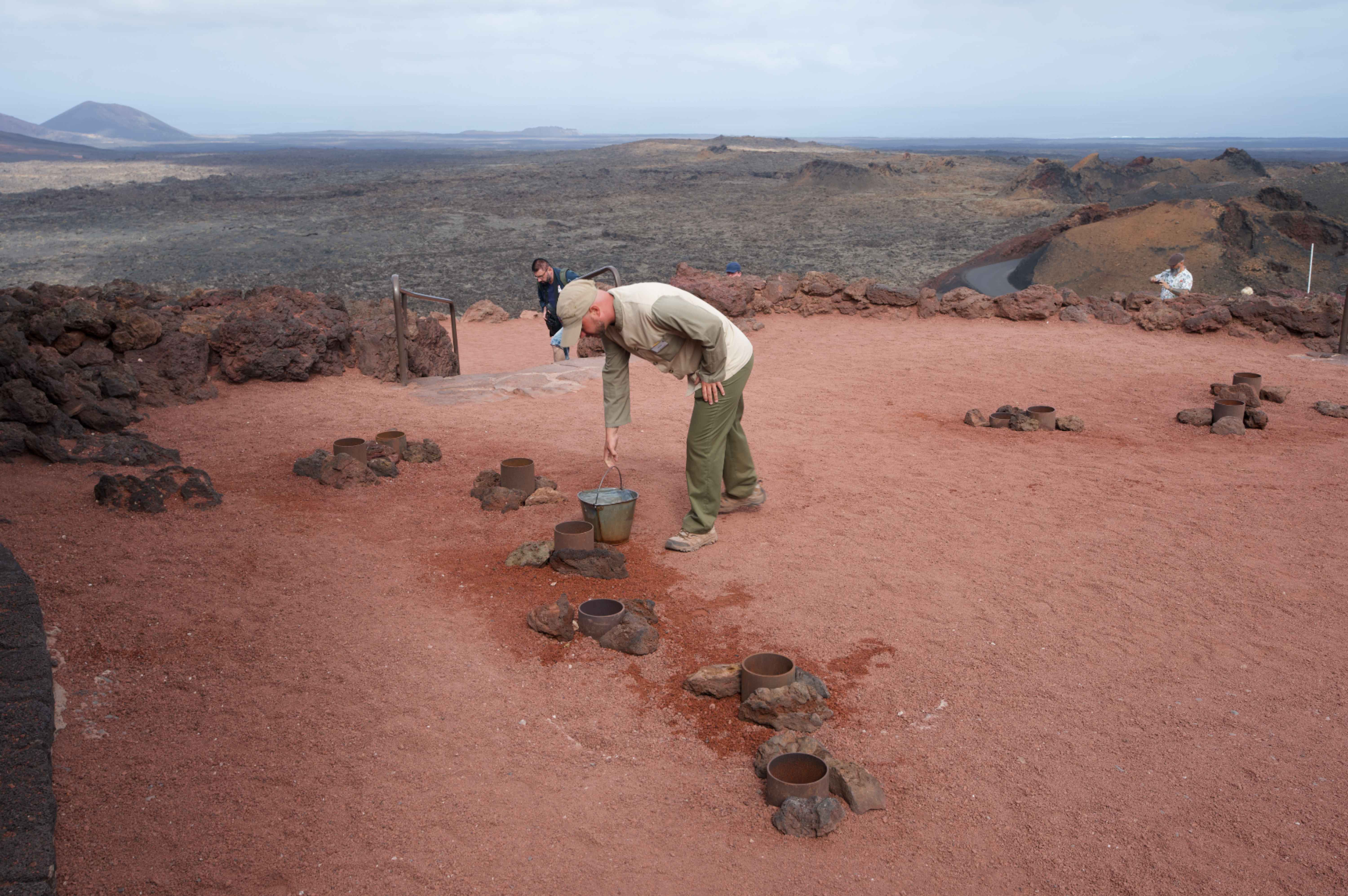
May is also one of the best months to travel to Spain. The weather is delightful, perfect for strolling the streets in warm temperatures without sweating. It is a great time to hit the Mediterranean coast and explore natural landscapes, as Spring will have them blooming!
You should expect longer days, cooler mornings, warmer nights, and festivities, so pack light, breathable clothing but light jackets for evenings.
📌 Read Full Article: Spain in May: 7 Travel Tips, Activities & Weather
Also, I recommend going on weekend getaways to nearby towns, which are also perfect for these dates, as most of the country experiences delightful weather during this month.
- In the north, cities enjoy mild and pleasant weather, with daytime temperatures ranging from 61°F (16°C) to 68°F (20°C). Central Spain is a bit warmer but pretty similar.
- Southern regions experience warm and sunny weather, with daytime temperatures ranging from 77°F (25°C) to 81°F (27°C).
May is the last month to take advantage of lower flight tickets before the Summer prices arrive, so book everything in advance so you can get great deals. Nothing to worry about compared to the summer months.
Rating: ⭐⭐⭐⭐⭐ (Perfect time to come!)
Spain in June

June is the transitional month for Summer in Spain. You should expect longer days of sunny, bright, and warm weather in almost every part of the country. It is also a great time to visit the beaches like Costa Brava, Costa del Sol, and the Islands.
But hear me out: This is the absolute LAST chance to visit the Islands before they get packed with visitors (and party people). Plus, the lower prices than in July and August make June one of the ideal months to travel!
- Temperatures in Northern Spain are more pleasant than in the South. It has daytime temperatures ranging from 64°F (18°C) to 72°F (22°C).
- Central Spain is a bit warmer, 77°F (25°C) to 86°F (30°C).
- Southern Spain will be at 86°F (30°C) or higher most of the time.
📌 Read Full Article: Spain in June: 9 Travel Tips, Activities & Weather
In addition, walking in the middle of the day in inland cities such as Madrid, Córdoba, or Seville in July or August is almost impossible. So June is your last chance to do it.
Festivals, concerts, and celebrations will be all over the place, and the famous “discount season” in sites like Zara, Massimo Dutti, El Corte Inglés, and almost every clothing shop. They begin the last week of June and end in August. (Read more)
Rating: ⭐⭐⭐⭐⭐ (Amazing, you’ll have a blast)
Spain in July
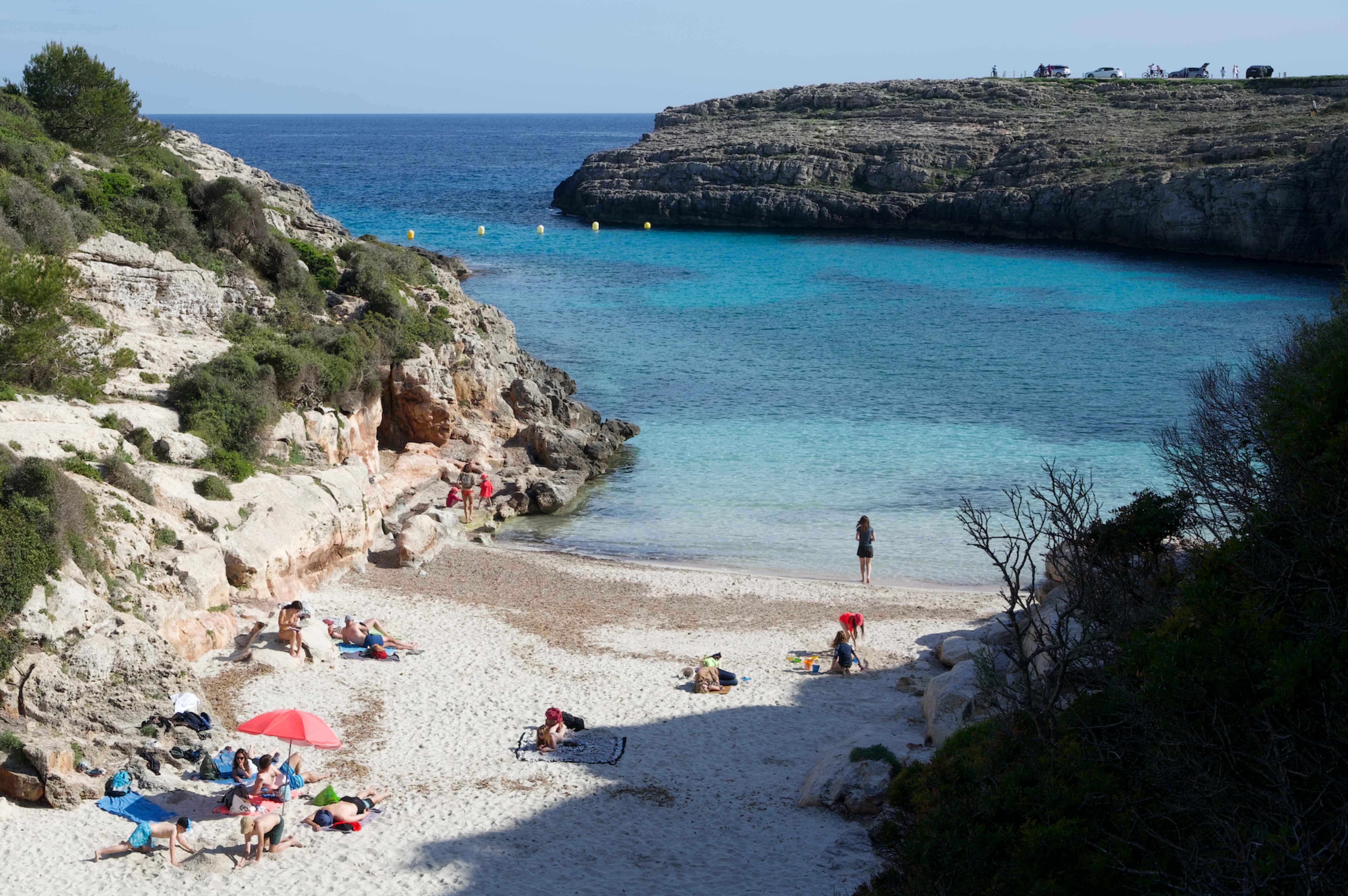
July is the high season in Spain. It is a perfect time to visit to experience the ideal sunny European vacation. The weather is extremely warm, great for visiting our beaches and doing water sports, sunbathing, and swimming, and you’ll find an array of cultural festivals and outdoor activities.
You should expect it to be sunny and warm across Spain, with some variations depending on the city you’re visiting. It is also dry almost everywhere in the country, except the north, which has a few days of rain.
📌 Read Full Article: Spain in July: 7 Travel Tips, Activities & Weather
- Northern Spain has mild and temperate weather with temperatures from 68°F (20°C) to 77°F (25°C). Central Spain, Including Madrid, has temperatures of (30°C) to 95°F (35°C) or even higher. So be prepared for the sun’s intensity because it gets really hot in here!
- On the other hand, Southern Spain is boiling at this point of the year, at 95°F (35°C). Stay away from these cities unless you’ll spend your days at the beach!
Regarding crowds and prices, they typically peak during the summer months. Therefore, if you prefer to avoid large crowds and seek a more budget-friendly experience, consider alternative months for your visit.
Nevertheless, there are multiple ways to make your travel vacation more cost-effective. (Find out here!)
Rating: ⭐⭐⭐ (too hot & crowded)
Spain in August

Spain in August is one of the most popular months to visit Spain, and it is also high season as the coastal areas are at their prime! Places like the Costa Brava and the Balearic and Canary Islands offer the perfect weather for long beach days. You can also expect local neighborhoods to be less crowded than usual.
While some might call it a “dead month,” Spain still welcomes many visitors, particularly in beach towns and tourist hubs. Also, neighborhoods like Gràcia or Poble Sec in Barcelona are less crowded, and the Barrio de Salamanca in Madrid is also much quieter than usual.
- Northern Spain enjoys pleasant weather, with temperatures between 68°F (20°C) and 77°F (25°C).
- Central Spain, including Madrid, has temperatures ranging from 86°F (30°C) to 95°F (35°C) or even higher! Here’s why locals usually leave the city for vacation.
- Southern regions can get extremely hot, with temperatures exceeding 95°F (35°C) and even higher. You see, that kind of extreme weather is just too much for my liking.
📌 Read Full Article: Summer in Spain: 10 Best Places to Visit & Weather Info
My advice for brave travelers who want to see the hype around the famous Ibiza and Mallorca in the Summer is to book everything in advance and plan your trip well. Always check the weather, pack accordingly, and please use sunscreen and stay hydrated!
You will have a blast! Hot weather is just the perfect excuse for enjoying ice cream and refreshing drinks at any hour. (As if we needed a reason for those activities in the first place!)
Rating: ⭐⭐⭐ (still too hot & crowded. Didn’t remove 1 star because of the famous festivals in the Islands, they’re worth it)
Spain in September
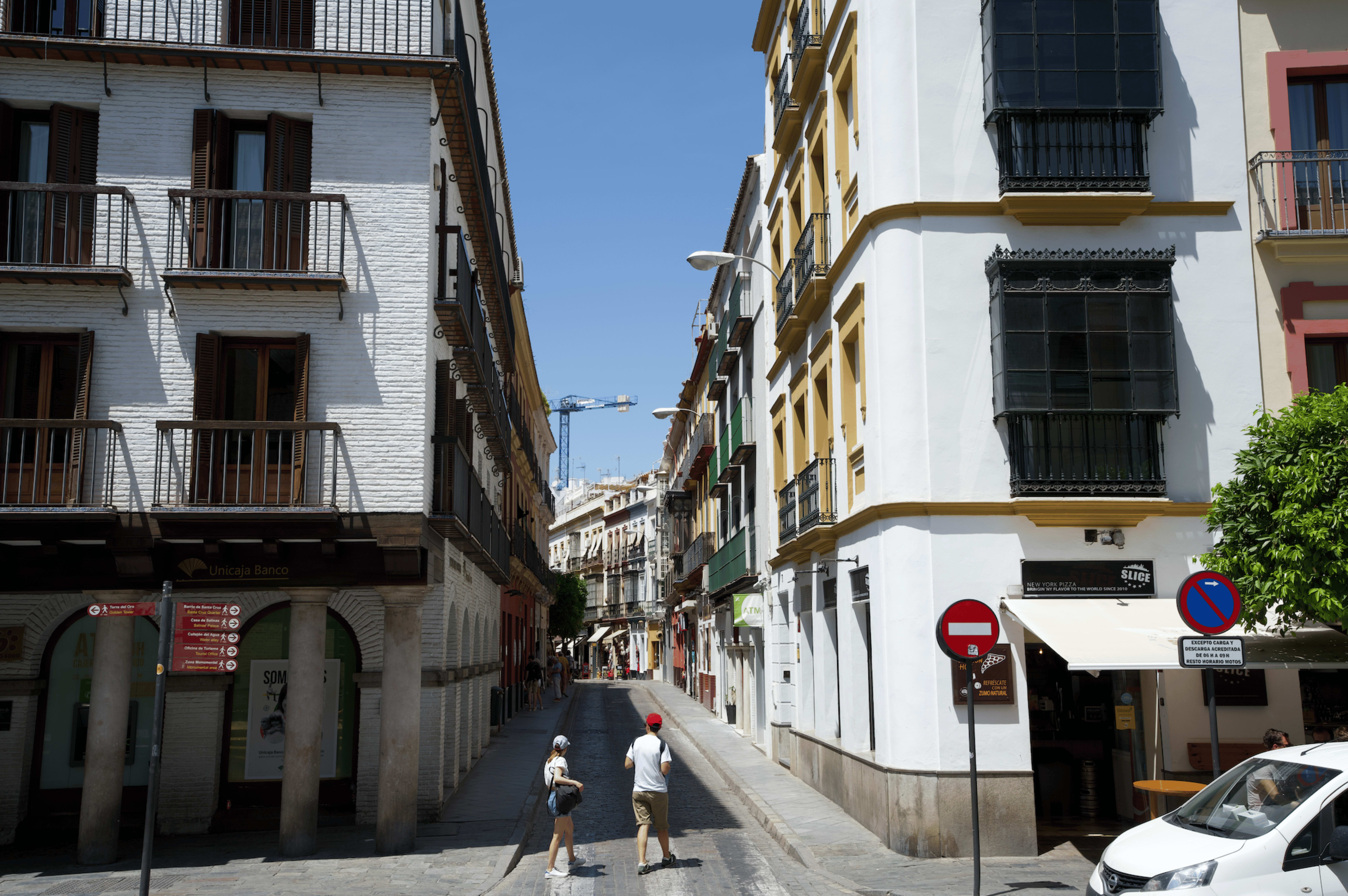
September is an excellent time to visit Spain. It is considered shoulder season after the peak of Summer; the weather is mild and comfortable throughout the country, with wind and occasional rainfall during the nights. Also, the islands and coastal areas are still perfect for going to the beach without extreme heat but way less crowded.
You should expect many cultural events and a great time to visit vineyards as the grapes are at their ripest and the harvest occurs. In Seville, the Bienal de Flamenco is a must-see!
📌 Read Full Article: Spain in September: 9 Travel Tips, Activities & Weather
As the peak tourist season winds down, it’s a great time for touring the big cities.
- Northern Spain has a temperate climate of mild weather; temperatures are from 68°F (20°C) to 77°F (25°C). Although it can be very bipolar…
- Central Spain, including Madrid, enjoys warm and pleasant weather with temperatures from 77°F (25°C) to 86°F (30°C)
- Southern regions continue to have warm and sunny weather with temperatures from 86°F (30°C) to 95°F (35°C).
Rating: ⭐⭐⭐⭐⭐ (10/10)
Spain in October
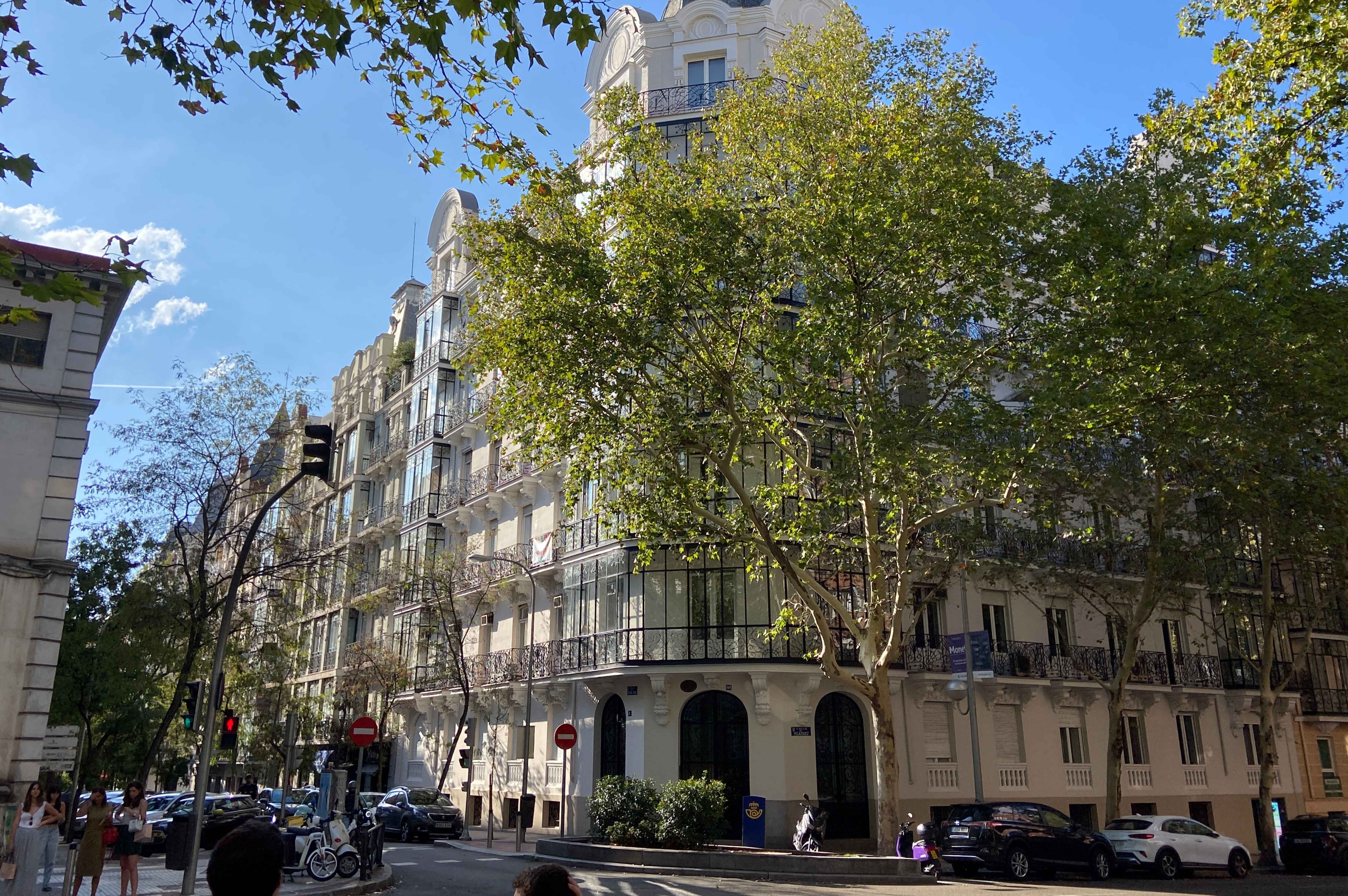
October is a great time to visit Spain, as it is shoulder season, which means you can enjoy more affordable prices and fewer crowds compared to the peak summer months. The weather is cozy in most of the country, and there is still plenty of sunlight to explore attractions without long lines and do fun activities at night!
But take this with a grain of salt since October is still great weather and a month full of activities, making it a relatively popular time for tourists.
- Northern Spain has cooler temperatures, from 59°F (15°C) during the day to cooler evenings, and it does rain.
- Central Spain, including Madrid, enjoys mild temperatures around 68°F (20°C) to 77°F (25°C), and evenings are cooler.
- Southern Spain still has warm and pleasant weather (I know!) with temperatures between 68°F (20°C) and 77°F (25°C). (it seems like the South is often a few months behind the season.)
I think it’s clear by now that my best advice is to book specific activities, flights, or accommodations in advance to ensure a smooth and enjoyable visit.
📌 If you don’t know where to begin, this itinerary can help you: How to spend 2 weeks in Spain? 12 Cities & Activities
Rating: ⭐⭐⭐⭐⭐ (wine & cozy weather. I’m in!)
Spain in November

Visiting Spain in November is perfect for those who prefer a more laid-back and budget-friendly travel experience, as you can take advantage of the low season.
Hotels usually launch weekend offers and discounts. One of the best things is that cities, towns, and villages are less crowded and, as a result, less stressed. You can visit museums, monuments, and restaurants without queuing up.
It is also a great time to do the Camino de Santiago, a pilgrimage route done annually by millions of pilgrims over the centuries. It starts in France and finishes in Galicia, in Santiago de Compostela.
📌 Read Full Article: Spain in November: 9 Travel Tips, Activities & Weather
November is a transitioning month to winter. So you should expect cooler and unstable weather conditions experienced in November.
- In the north, Northern regions experience cooler temperatures and rain, temperatures are from 46°F (8°C) to 59°F (15°C).
- Central Spain enjoys mild weather with daytime temperatures between 48°F (9°C) and 61°F (16°C) and rain.
- Southern regions maintain milder temperatures, ranging from 54°F (12°C) to 66°F (19°C).
It’s best to check the weather in the specific city and your travel days.
Rating: ⭐⭐⭐ (mmm, it begins to get too grey)
Spain in December

Spain in December is a beautiful month to travel to Spain. As a predominantly tradition-based culture, Christmas will be all over the place, creating a lovely atmosphere! While the weather is cold, it’s far milder compared to Northern Europe’s dark and grey winters.
The weather in Spain in December is cold but nothing compared to dark-grey Northern European winter. There are many family-friendly activities, delicious dishes unique to Christmas Eve and New Year’s, and many hidden traditions travelers would love!
December is the beginning of Winter in Spain, but temperatures vary across the country.
- Northern regions have cooler temperatures and rain, and temperatures are 41°F (5°C) to 55°F (13°C).
- Central Spain enjoys cool weather, with temperatures between 36°F (2°C) and 55°F (13°C).
- Southern regions maintain milder temperatures, ranging from 50°F (10°C) to 61°F (16°C).
You should expect popular attractions to be a little busier than in off-season months due to the holiday season, but everything will be alright with some planning.
📌 Read Full Article: Spanish Christmas: How We Celebrate a Merry and Bright Holiday
Rating: ⭐⭐⭐ (Our Chistmas markets hold at least one and a half stars)
What’s the best time to visit Spain?
All things considered, the best times to visit Spain are during Spring (late March, April, May, until mid-June) or Autumn (September, October, and early November). These seasons offer the most favorable weather conditions, many festivals, reasonable prices, and the best overall experience!
Frequently Asked Questions
What is the cheapest month to go to Spain?
The cheapest month to visit Spain is January, especially during the final week of the month. You’ll find significantly lower prices during this period compared to the peak tourist season.
People gradually return to their work routines, and the holiday season has ended. The weather tends to be cold and somewhat unpredictable, with fewer festivities occurring in late January and early February compared to Spain’s bustling high-season months.
📌 Read more: How to Travel Spain on a Budget: Cost Guide & Tips

What months are high season in Spain?
The high season in Spain kicks off around mid-June and ends in late August. During this time, you can expect prices to skyrocket, more crowds, and major cities packed with tourists. And let’s not forget the scorching weather – it’s almost unbearable for the locals!
📌 Read more: 15 Best Beach Holiday Destinations in Spain (by season)
What season is best for wine tours in Spain?
The best time to visit vineyards and wine tourism in Spain is between July and October, especially during Autumn. Why? The grapes are at their ripest, and the harvest occurs. These months offer a unique opportunity to experience the process of grape harvesting and wine production, perfect for those interested in gaining deeper insights into the winemaking journey.
📌 Read more: Spanish Vineyards: Insider’s Guide to the Best Wine Tours

What month is the best weather in Spain?
The best weather is relative. One of the most enjoyable months is undoubtedly during the spring season, from April to May. This period offers an ideal blend of pleasant climate conditions where temperatures typically range from around 56.48ºF (13.6ºC) to 80.6°F (27°C), although this can vary depending on the region.
Alternatively, if you savor hot and sunny days, your prime window to experience Spain at its brightest and driest is between June and September when rain is scarce.
📌 Read more: What’s the climate in Spain? Our Real Weather and Temperature

What time of year is best for Spain beaches?
The best time to visit Spain and enjoy the beaches is late Spring and early Fall. In summer, the beaches tend to be crowded, and during Easter, Spain attracts millions of tourists due to the holidays and festivities.
📌 Read more: 23 Best Beaches in Spain: Key Tips to Visit & Videos!
I hope this list has offered you valuable insights to choose the best time for your vacation to Spain!
Please keep in mind that preferences can vary, which is why I included objective arguments before offering my personal rating based on my preferences.
However, I genuinely believe that these are the best months to visit and have an exceptional experience!
Don’t hesitate to ask questions about planning your trip, because we’re here to help you.
Happy travels!



